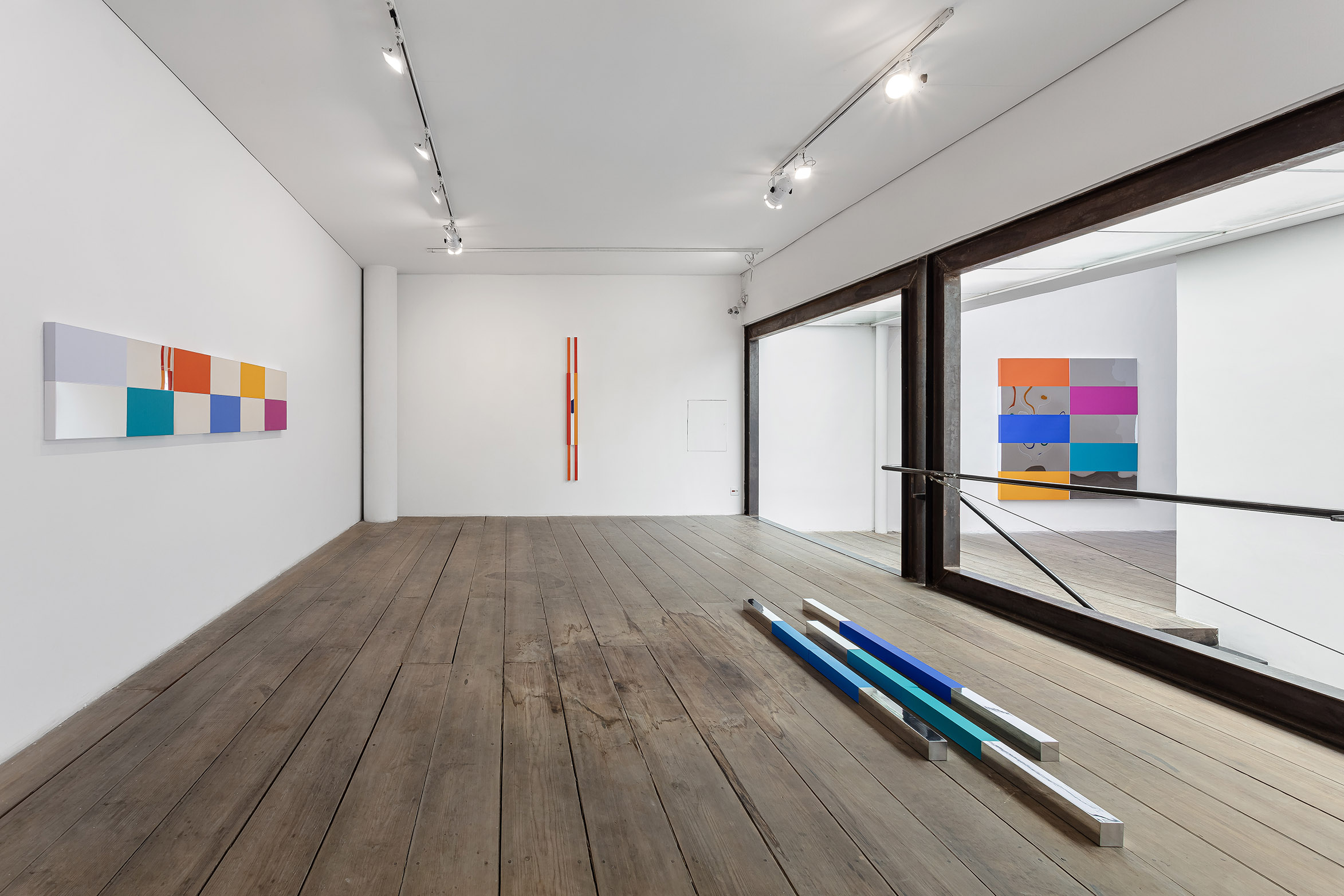2024
Reflexes - Felipe Scovino
The titles are the first singular feature of this collection of Renata Tassinari works. There is an expansive mechanism in them, the construction of an image the artist tries to create for her works, making them slip away even further. This process, persuasive and in complicity with the spectator, synthesizes the principal movement in the work — that of not being fixed, of always slipping into indecisive allusion. Baleia II [Whale II], Lanterninhas Marola [Little Flashlights Ripple], Leblon II (all from 2023): there is a sense of movement in these works as if the color were spreading out like the bed of a stream. And the titles push the works or the color in every direction. They are not simply paintings, or objects, whatever you want to call them, because, above all, and in some works more than others, they condition an organic will and condense an idea or image of nature.
The color flows in these Tassinari works. Even when concentrated, gaining a certain degree of thickness, the color wants to move. The structure of acrylic — full of color, long, thin, and breakable — suggests movement. The metaphorical image of a river is definitely present in these works, and it is no accident that some of the titles, once again, evoke the universe of waters. I would also say that the absence of a frame for these works, of the structure that “imprisons” form, aids this state of representing color that is pure flow. One could also say that the work is formed by many fragmented frames that explore this image of rapidly expanding color.
But there is more movement happening simultaneously in these works. Observe the importance of intervals and empty spaces in the drawings, paintings, or objects. The sequence of drawings in the series Alba (2021), placed side by side, demonstrate not only games between color and shape but, again, an idea of speed and transience: effectively, they put white into play not as an absence but as a modulator of this experience of movement. The chromatic areas are always interchanging, creating other possibilities of existence for what appears to be the same visual model — a rectangle divided into six unequal parts. The influence of the intervals or white spaces is as decisive as the areas of color because they definitively are color. They help to format the grid — the Minimalist reference in the work — and, at the same time, activate the experience of color as a modulator of spaces. This is accentuated by the pallet of colors the artist has chosen, colors that provoke an intensity of light on the surface of the support. There are no sobre colors here, but purple, red, orange, navy blue, and vigorous green.
Still on the subject of white and its interval state, in Lanterninhas Marola, the painting appears to implode. Or, better, what delimited it — the frame — is the form and matter of the work. The broken frame, dismembered into six horizontally arranged parts, moves through the space, evoking speed and, once again, the associative idea of a river. The intervals separating these horizontal beams are and are not part of the painting. This state of dissolution and rupture also appears in other works. Narciso II [Narcissus II] and Narciso III [Narcissus III] (both 2023), for example, even though apparently compact, unfragmented works, contain areas of color interrupted by mirrors. The unity is provisional because the cut or interruption is already in question. I would like to emphasize, therefore, this element of division — which will go a step further with reflectivity, as we will discuss shortly — combined with the work’s desire to take up the space. It is no accident that Baleia II is an installation, even though its reference is painting. Its breakable appearance, divided into three “slats,” adopts a classic structure in Tassinari’s work while simultaneously pointing to a three-dimensionality and conquest of space. The painting leaves its solid state to become a fluid action. Tassinari is more interested in space and its possible “aerial” shifts than the flat plane. Perhaps to suggest the inexhaustible, prospective nature of painting itself.
These works thus reveal a tension with two-dimensional limits. They convey, as previously stated, organic representations that are also confused with the body. They desire an incorporation of the individual who is no longer a passive agent but a participant in an experience. The mirrors in some of the works suggest — both in the sense of mirroring and investigating — a divided body, as well as revealing these fragmented works. The works feel unstable and inconstant. They strive to escape attempts to complete and dominate them, just like the body of the viewer who sees and is seen in front of this mirror. For Tassinari, painting is an uninterrupted task of construction and, at the same time, a sense of vertigo and precipitation that passes through the viewer’s body. The serialized space and structural and specular reasoning construct a visual rhythm defined by openness and incompleteness.
These works impose division, paintings asserted by the fractures they determine, emptiness as construction and not loss, another way of seeing things and, therefore, interrogation. They draw our attention to the many aspects of color, including its reflective and transitory character. Colors and their myriad meanings, forms, and speculations challenge any expectation of order and hierarchy. The forms, colors, names, and speculations developed in Tassinari’s work expose a dense, diverse, and complex style.
Felipe Scovino
